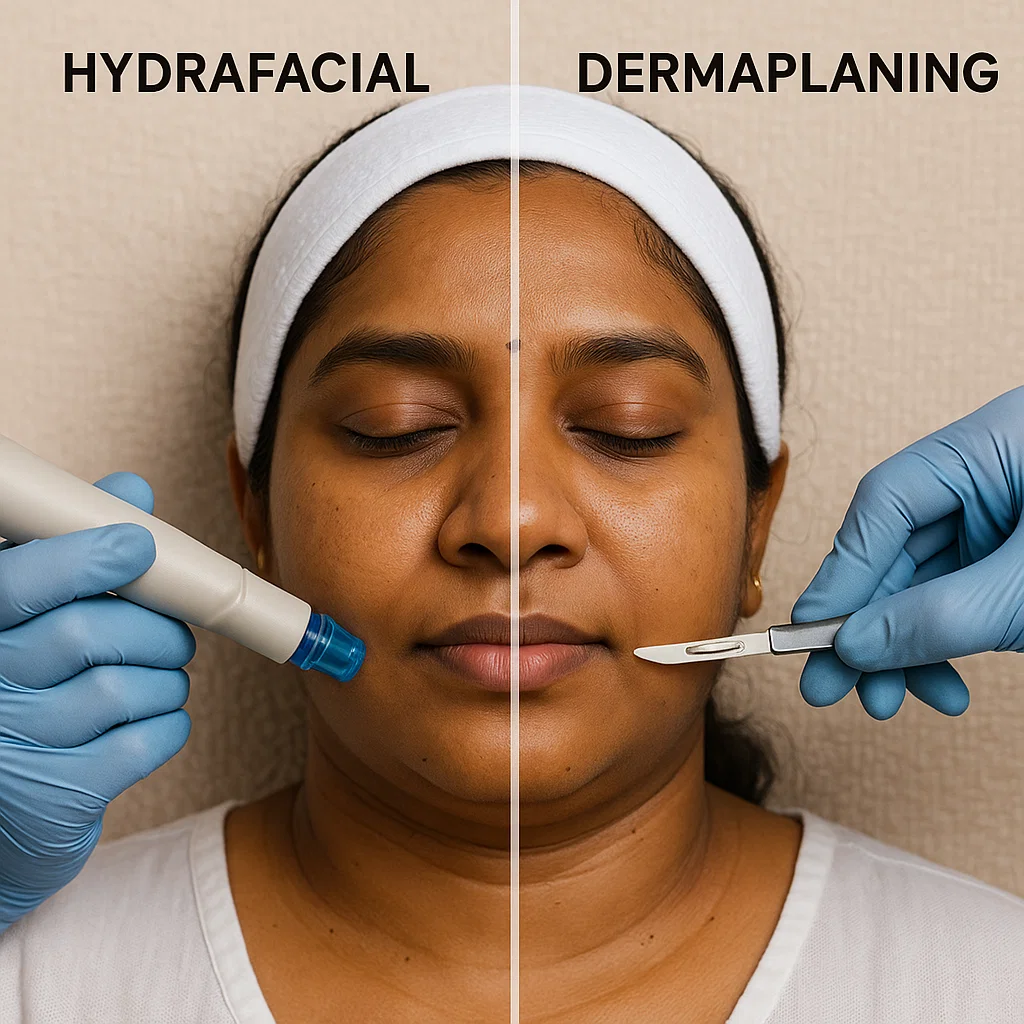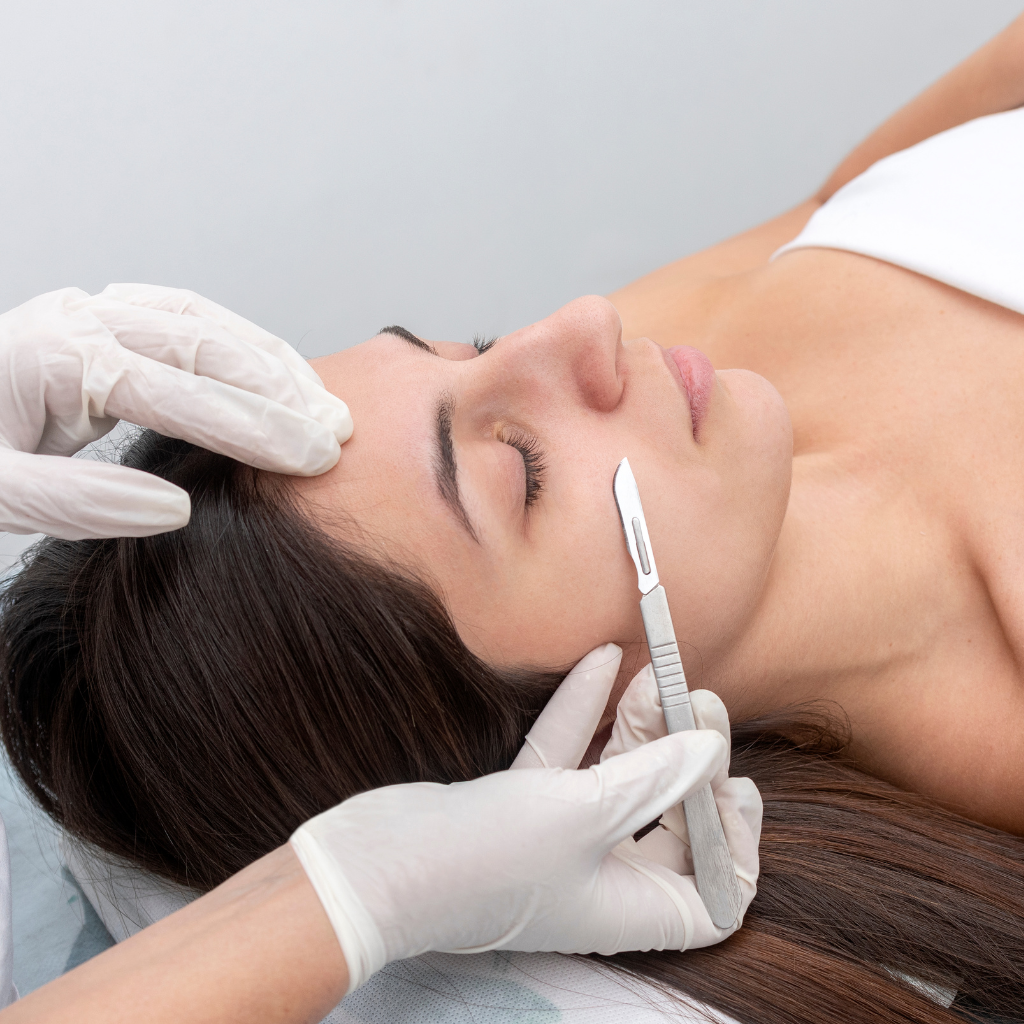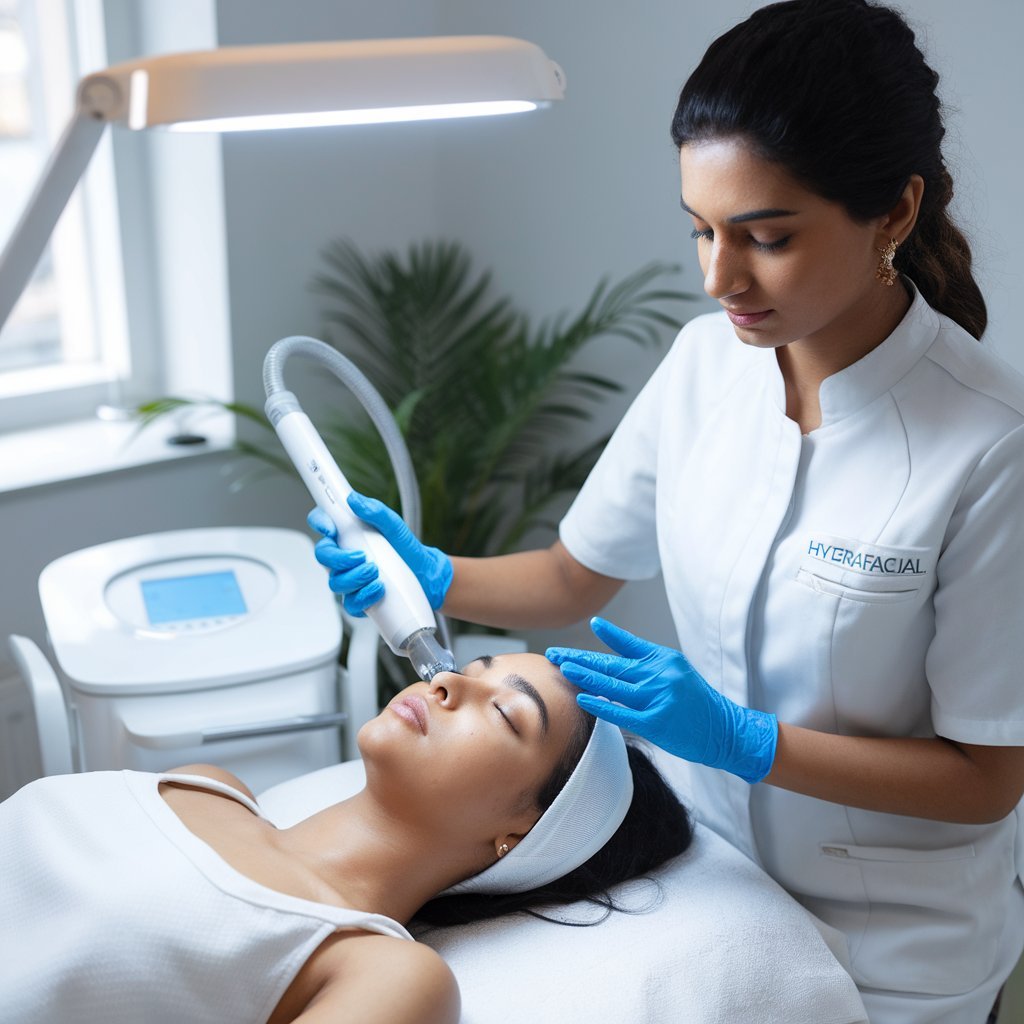HydraFacial vs Dermaplaning: Which Is Better for Skin?
- Home
- Skin Rejuvenation
- hydrafacial vs dermaplaning

HydraFacial vs Dermaplaning: Which Treatment Suits Indian Skin Best?
Professional skincare can transform how you feel about your appearance, boosting both your confidence and daily outlook. Especially for those in Chennai and Coimbatore, investing in treatments like facials, HydraFacial, Dermaplaning can help maintain vibrant skin despite harsh sunlight, pollution, and busy lifestyles. At Tune Clinical Aesthetics, customised care ensures clients receive the safest, most effective approach.
Among today’s best facial options, many wonder what HydraFacial and dermaplaning are, and how they compare. Both are designed to improve skin texture and tone, but they do so differently. In this post, we explore hydrafacial vs dermaplaning, highlight their benefits, and explain why trusting Tune Clinical Aesthetics to guide your skincare strategy is the wisest choice in India.
Understanding the Basics
- HydraFacial uses a combination of gentle exfoliation, hydration serums, and vacuum-based extraction to cleanse pores and leave the skin glowing. It is ideal for reducing hyperpigmentation, mild acne scars, and daily dullness in Indian climates.
- Dermaplaning involves removing the top layer of dead skin cells and fine facial hair using a specialised blade, allowing skincare products to penetrate more effectively, making it a popular method for achieving a smoother complexion.

HydraFacial vs Dermaplaning Comparison
HydraFacial excels at intense hydration compared to these two treatments, making it an excellent option for dry, sun-exposed skin. Dermaplaning, in contrast, exfoliates by removing fine facial hair and dead skin cells, helping create a silky canvas for makeup. Both procedures can complement one another, leading to customised skincare treatments that deliver radiant skin solutions. Understanding both methods can guide your decision if you seek the best facial for glowing skin.
When to Dermaplane with HydraFacial
Deciding when to dermaplane with HydraFacial depends on your specific skincare goals and comfort. Some first undergo a HydraFacial to deeply hydrate and clear pores, followed by dermaplaning sessions that improve skin texture and tone. Others prefer reversing the order. Our experts assess factors like acne scars, pigmentation, and overall skin health to determine the best treatment sequence, ensuring each step complements and enhances the next.

Tailoring Treatments in India
India’s climate, with high humidity in coastal regions like Chennai and intense sun in Coimbatore, calls for treatments that minimise excess oil and sun damage while retaining adequate moisture. At Tune Clinical Aesthetics, we design each session based on the Indian environment and individual skin type. So whether you choose an exclusively hydrating approach, a gentle exfoliation, or both, our team ensures safe, results-driven outcomes. Many clients also seek our HydraFacial treatment for wrinkles, which is tailored to refresh skin, soften fine lines, and restore a youthful glow while keeping sensitivity in mind.
Conclusion
Professional skincare treatments like HydraFacial vs dermaplaning offer an excellent route to clearer, healthier-looking skin. In India, where factors like sun exposure and pollution often take a toll, these approaches help reduce pigmentation, soften acne scars, and enhance overall radiance. Many clients also ask about HydraFacial vs Microneedling, as both treatments target different layers of the skin—one focusing on gentle hydration and exfoliation, the other on collagen stimulation and repair. You can access a skilled team dedicated to creating personalised treatment plans by booking an appointment with Tune Clinical Aesthetics. Whether you want to minimise wrinkles, reduce blemishes, or boost your glow, our safe and advanced services can pave your way to timeless beauty and vibrant confidence.

Highly skilled cosmetologist at Tune Clinical Aesthetics, specializing in advanced skin and hair treatments.
